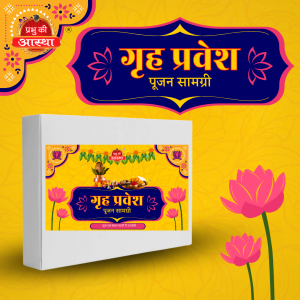Ghee batti, also known as ghee diya, is a type of lamp used in Hindu religious ceremonies, particularly during puja or worship. It is made by melting ghee, which is clarified butter, and pouring it into a small clay or metal container with a cotton wick. The wick is lit and the ghee burns slowly, producing a bright flame and a pleasant aroma. Ghee is believed to be a pure substance that is offered to deities as a symbol of purity and devotion. Lighting a ghee batti is considered to bring good luck and blessings, and is a common practice during festivals and other auspicious occasions. The flame of the ghee batti is believed to represent the divine light of the deity being worshipped, and is used to purify the environment and create a sacred atmosphere. Ghee batti can also be used for aromatherapy, as the burning ghee releases a pleasant scent that is said to have a calming effect on the mind and body. In addition to its religious and spiritual significance, ghee batti is also used in traditional medicine for its therapeutic properties. It is believed to have a cooling effect on the body and can be used to treat various ailments such as inflammation, sore throat, and cough. Ghee batti remains an important part of Hindu culture and tradition, and is used in many homes and temples for its spiritual, therapeutic, and aromatic properties.
DIVYA GHEE BATTI
Ghee batti, also known as ghee diya, is a type of lamp used in Hindu religious ceremonies, particularly during puja or worship. It is made by melting ghee, which is clarified butter, and pouring it into a small clay or metal container with a cotton wick. The wick is lit and the ghee burns slowly, producing a bright flame and a pleasant aroma. Ghee is believed to be a pure substance that is offered to deities as a symbol of purity and devotion. Lighting a ghee batti is considered to bring good luck and blessings, and is a common practice during festivals and other auspicious occasions. The flame of the ghee batti is believed to represent the divine light of the deity being worshipped, and is used to purify the environment and create a sacred atmosphere. Ghee batti can also be used for aromatherapy, as the burning ghee releases a pleasant scent that is said to have a calming effect on the mind and body. In addition to its religious and spiritual significance, ghee batti is also used in traditional medicine for its therapeutic properties. It is believed to have a cooling effect on the body and can be used to treat various ailments such as inflammation, sore throat, and cough. Ghee batti remains an important part of Hindu culture and tradition, and is used in many homes and temples for its spiritual, therapeutic, and aromatic properties.
Related products
-
 Read more
Read moreGrih Pravesh Puja Kit – Complete Essentials for an Auspicious New Beginning Step into your new home with divine blessings and positive energy using our Grih Pravesh Puja Kit, a comprehensive set of sacred items specially curated for performing the traditional housewarming ceremony. According to Vastu and Hindu traditions, a Grih Pravesh Puja cleanses the space,…
-
 Read more
Read moreShani Puja is a Hindu ritual performed to appease Lord Shani, the God of Justice and Karma. This puja is believed to remove the malefic effects of Saturn in one’s horoscope and bring peace and prosperity in their life. The puja involves the chanting of mantras, offering of puja items, and performing aarti to Lord…
-
 Read more
Read moreRoli, also known as kumkum, is a red-colored powder that is widely used in Hindu religious ceremonies and rituals. It is made by grinding turmeric and other natural ingredients, and is often mixed with sandalwood paste or other items to create a fragrant and colorful paste. Roli is considered to be a sacred substance, and is used to mark the forehead or other body parts as a sign of blessings or auspiciousness. The red color of roli is believed to represent the creative energy of the divine feminine, and is often used to symbolize devotion, purity, and good fortune. Roli is also used in various Hindu festivals and ceremonies, such as weddings, and is often offered to deities as a sign of respect and devotion. The use of roli is an important aspect of Hindu culture and is believed to have spiritual significance in enhancing one’s connection with the divine.
-
 Read more
Read moreKumkum, also known as kumkuma or sindoor, is a powder that is traditionally used in Hindu religious rituals and in traditional Indian makeup. It is made from a combination of turmeric and slaked lime, which gives it a distinctive red-orange color. Kumkum is often applied to the forehead, as a bindi or tilak, as a symbol of marriage, and for religious or cultural purposes. In addition to its use in rituals, kumkum has also been used in traditional medicine for its antiseptic and anti-inflammatory properties. Some people use it as a natural remedy for skin conditions such as acne and eczema. While kumkum is generally considered safe for external use, it should not be ingested or used in excessive amounts. It is important to purchase kumkum from a trusted source and to avoid using products that contain harmful additives or chemicals.




Reviews
There are no reviews yet.